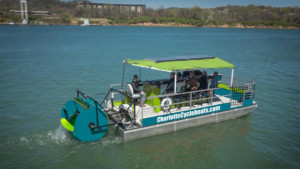 The global boat market has been growing steadily in recent years. As more people embrace recreational water activities, demand for all types of boats—from yachts to personal watercraft—has risen noticeably.
The global boat market has been growing steadily in recent years. As more people embrace recreational water activities, demand for all types of boats—from yachts to personal watercraft—has risen noticeably.
This surge is driven not just by adventure seekers but also by families and retirees looking to enjoy their time on the water. However, the market is not just growing in terms of sales. Shifts in technology, environmental concerns, and consumer preferences are shaping what the future holds for the boating industry.
Read this blog until the end to clearly understand the boat market size, trends, and predictions.
Current Market Size
The size of the global boating market is substantial. It was valued to be at $32.47 billion in 2023 and is expected to grow from $34.25 billion in 2024 to $61.19 billion by 2032. North America and Europe lead the market, but there has been significant expansion in Asia-Pacific due to rising incomes and an increasing interest in water-based leisure activities. The COVID-19 pandemic also played a role in boosting the industry, with more individuals seeking socially distant outdoor activities. This trend pushed boat sales to record levels, especially for smaller, more affordable models.
Technological Advancements
Technology continues to play a crucial role in shaping the future of the boating industry. Smart boat technologies, such as autonomous navigation systems and advanced communication tools, are becoming more common. Electric boats are also gaining traction, driven by environmental concerns and the desire to reduce fuel costs. These innovations not only enhance the boating experience but also make it more accessible and eco-friendly, as they contribute to lower maintenance and operating costs over time.
Another important area of growth is boat maintenance services. For instance, professional services like those that shrink wrap my boat can help protect vessels during off-season storage. This reduces the risks of tears, prolongs their lifespan, and ensures they remain in good condition. This has become a valuable asset for boat owners, especially those in regions with harsh weather conditions.
Consumer Preferences and Lifestyle Shifts
Consumer preferences have shifted toward smaller, more versatile boats. While yachts and larger vessels still dominate the luxury market, there is growing interest in boats that offer both leisure and practical use. Speedboats, fishing boats, and personal watercraft like jet skis are increasingly popular among younger demographics. These smaller vessels are often more affordable and easier to maintain, making them accessible to a broader range of consumers.
The desire for customization has also grown. Many boat buyers are looking for options that fit their unique needs, whether it is enhanced technological features or specific design elements that reflect their style. Customization has become a key selling point for manufacturers, allowing consumers to build a boat that is truly their own.
Environmental Impact and Sustainability
Sustainability is another trend impacting the boating market. There has been a significant push for greener solutions, from electric boats to eco-friendly materials. Regulations are tightening in many regions, with new rules aimed at reducing carbon emissions and water pollution. Manufacturers are responding by creating boats that use alternative energy sources, such as solar power, or by improving fuel efficiency through advanced engine designs.
Recycling and responsible disposal of boats at the end of their lifecycle are also areas of focus. Companies are developing more sustainable ways to dismantle and recycle boat parts, further contributing to a greener boating industry. This trend not only aligns with consumer values but also opens up new market opportunities for eco-conscious buyers.
Market Forecast
Looking ahead, the global boating market is expected to continue growing, with a projected compound annual growth rate (CAGR) of about 5% from 2024 to 2030. Emerging markets, particularly in Asia-Pacific and Latin America, are bound to see the highest growth rates. These regions are experiencing a surge in demand as middle-class incomes rise and the appeal of leisure boating spreads.
Additionally, electric boats and other environmentally friendly models are expected to play a larger role in driving market expansion. Governments worldwide are offering incentives to encourage the adoption of cleaner technologies, which should boost both production and sales of electric-powered vessels.
Final Thoughts
The boating industry is experiencing dynamic growth, driven by technological innovations, changing consumer preferences, and a strong push toward sustainability. As more people discover the joys of being on the water, the demand for boats is likely to keep increasing. Manufacturers and service providers who stay ahead of these trends will be well-positioned for success in the years to come. With continued innovation and a focus on environmentally responsible practices, the future of the boating market looks bright and full of exciting possibilities.


